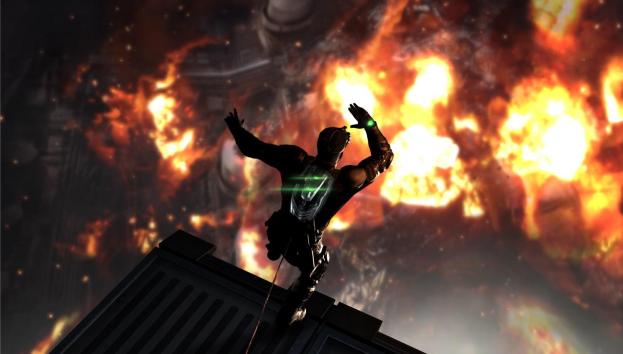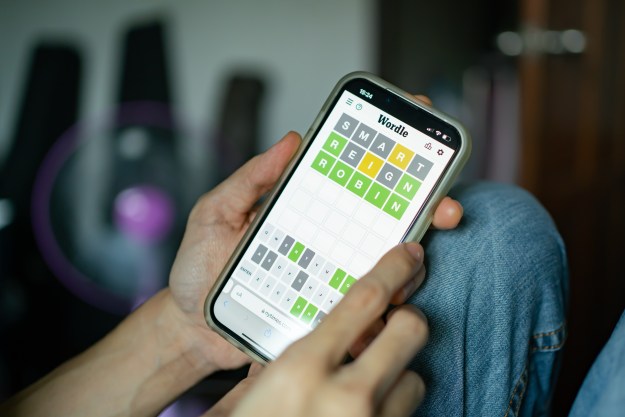 It was midway through my fourth playthrough of the same section in Splinter Cell: Blacklist that my patience with that son of a bitch Herman finally wore thin and I snapped. It was my own fault, of course. As a fan of the Splinter Cell series from back in the days when a single guard’s lucky glance in the wrong direction could mean instant fail, my inclination with Blacklist was to be a ghost. I wanted to clear the Water Treatment Plant in Chicago, an early level in Blacklist where the terrorist group known as the Engineers were planning a devastating attack under the guise of attacking “American consumption,” without the enemy knowing I was there. I wanted them to continue on with their digital lives after I had gone, possibly blaming themselves for their failure. I would curse them with the greatest and most devastating weapon I could use: self-doubt. But then Herman appeared.
It was midway through my fourth playthrough of the same section in Splinter Cell: Blacklist that my patience with that son of a bitch Herman finally wore thin and I snapped. It was my own fault, of course. As a fan of the Splinter Cell series from back in the days when a single guard’s lucky glance in the wrong direction could mean instant fail, my inclination with Blacklist was to be a ghost. I wanted to clear the Water Treatment Plant in Chicago, an early level in Blacklist where the terrorist group known as the Engineers were planning a devastating attack under the guise of attacking “American consumption,” without the enemy knowing I was there. I wanted them to continue on with their digital lives after I had gone, possibly blaming themselves for their failure. I would curse them with the greatest and most devastating weapon I could use: self-doubt. But then Herman appeared.

Sure, Herman drove me in to a homicidal rage that would have put Sam Fisher in a very, very dark place spiritually, but it also highlighted the thing that sets Blacklist apart from its predecessors, and most stealth action games. Splinter Cell: Blacklist rewards you for playing it in whatever fashion you want.
Blacklist exists in the same mold as the previous Splinter Cell games, with mostly linear levels and an emphasis on being sneaky. The post-level scoring system, however, is what sets it apart. It might sound like a minor thing, but it really does change how you approach a mission. In the previous Splinter Cell game, Conviction, it’s biggest flaw was that it made you feel stupid for playing the game like a traditional Splinter Cell game. You could be super sneaky and slowly make your way through levels, spending hours on painstaking research of the movement patterns of guards – or you could just run through that same area in a matter of minutes with Death as your co-pilot, and there were no consequences. It made your stealth efforts worthless, and you were often forced into fights regardless, which felt like a bit of a betrayal of the series’ principles. Sam Fisher is a shadow, a story terrorists tell their little terrorist kids to get them to do their chores and eat their vegetables. He doesn’t grab an assault rifle and murder a small town’s worth of people. If you want to go that route in Blacklist, you are free to, but thankfully, for the obsessive gamer like me who wants to remain unseen, you can do that too and receive a huge bonus for it. And when Herman shows up, you can weigh the cost of that bonus versus the sweet, sweet taste of vengeance. It was totally worth it.
Story/Concept

One Interface to Rule Them All. The overarching story pits Fisher and the new Fourth Echelon against the Engineers, a terrorist organization that plans a series of escalating attacks against the United States, with the end goal of having America recall all of its troops stationed abroad. Under orders from the President, Fourth Echelon follows clues around the world, from Paraguay to Chicago to Benghazi to Louisiana to London and more, always one step behind of the well informed Engineers. The main arc plays out through the single player campaign, but to get the full story you’ll also need to play the co-op missions.

The co-op missions can be accessed at any time during the campaign, and once they are unlocked by talking to the NPC that assigns them, they can be replayed at any time either with a friend or solo with an AI partner. Each co-op assignment is a standalone mission that is connected to the Engineers plot, but independent of the main story line. You don’t need to play it to get the full story, but it adds to it. The missions range from stealth with instant fail consequences if spotted to all-out assault to a mixture of the two. You can even combine styles in some missions, and have one person go Leroy Jenkins while the other sticks to the shadows.
Give Me a Ship. Fisher’s world revolves around Fourth Echelon’s pimped out cargo plane that doubles as a mobile command center. From here you’ll choose your next missions, but you’ll also get to talk with your crew, including: Briggs, Fisher’s protégé; Charlie, the Q of the organization; Kobin, the man who sort of faked Fisher’s daughter’s death, and so ended up on his “naughty” list; Grimsdotir, who narrowly avoided getting shot in the head by Fisher, and now enjoys the odd awkward conversation with him. It all plays out in a similar fashion to an RPG like Mass Effect’s Normandy interactions.
Gameplay



Same Old Fisher. Thanks to the multiple pathways, Blacklist plays like Conviction, down to the ability to mark targets and execute up to three enemies at once, but it also hearkens back to the older games. Each area tends to have a few options on how to proceed, and the gadgets like noisemakers and an RC helicopter with a camera can help when your path is blocked. Both stealth and combat options feel natural, and Fisher moves with a fluidity afforded to him thanks to new motion capture technology, which is made possible due to the sad absence of Michael Ironside.
Presentation

Takeaway
Although the next-generation of consoles is stealing most of the attention of the gaming industry at the moment, Splinter Cell: Blacklist is a good example of why the current gen won’t disappear any time soon. It’s a game that lets you play how you want, and rewards you accordingly. If you want to go old school and sneak through levels, you can. If you want to bathe in the blood of your enemies, you can do that too. And you can do either solo or with a friend (in specific missions). The fate of Herman and his ilk is in your hands when Splinter Cell: Blacklist arrives on PC, PS3, Xbox 360, and Wii U on August 20.
[UPDATED: This article has been updated to correct an error – the Engineer’s attack is on “American Consumption,” not “American Consumerism” as originally noted.
Editors' Recommendations
- The Witcher 3’s current-gen port has been delayed yet again
- Assassin’s Creed and Splinter Cell VR coming exclusively to Oculus headsets
- New Splinter Cell game reportedly in the works, with release planned for 2021


